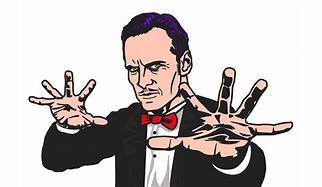Hypnosis is a natural state in which attention to the outside world is diminished to allow the subconscious to be more present and to perceive new resources. Under hypnosis, it will be possible to manage pain, depression, stress, improve self-confidence ...
L'hypnose est un état naturel au cours duquel l'attention au monde extérieur est diminuée pour permettre à l'inconscient d'être plus présent et de percevoir de nouvelles ressources. Sous hypnose, il va être possible de gérer la douleur, la dépression, le stress, améliorer la confiance en soi...

Source photo
Origins of hypnosis
The invention of the term "hypnosis" is often attributed to James Braid, a Scottish physician, who is said to have created this term in 1843, in reference to Hypnos, the Greek god of sleep. It seems in fact that it was Baron Etienne Felix d'Hénin de Cuvillers who first started using the prefix "hypn" in 1819 (Gravitz 1993). However, the history of hypnosis begins with Franz Anton Mesmer at the end of the 18th century, a doctor who practiced magnetotherapy: the magnets placed on the patient's body were supposed to have an action on his ailments. Ultimately it highlights the principles of hypnosis: the use of suggestion, the power of the imagination, and above all the importance of a modified state of consciousness to facilitate the therapeutic effects. The Marquis de Puységur takes over and describes the state of hypnosis as a "somnambulism" giving access to internal resources, thanks to the human link (between the practitioner and the patient) which reveals a potential for self-healing, or better -to be.
L'invention du terme "hypnose" est souvent attribuée à James Braid, médecin écossais, qui aurait créé ce terme en 1843, en référence à Hypnos, le dieu grec du sommeil. Il semble en réalité que ce soit le baron Etienne Felix d'Hénin de Cuvillers qui ait le premier commencé à utiliser le préfixe "hypn" dès 1819 (Gravitz 1993). Toutefois l'histoire de l'hypnose commence avec Franz Anton Mesmer à la fin du XVIIIe siècle, médecin qui pratiquait la magnétothérapie : les aimants posés sur le corps du patient étaient supposés avoir une action sur ses maux. En définitive il met en lumière les principes de l'hypnose : l'utilisation de la suggestion, le pouvoir de l'imaginaire, et surtout l'importance d'un état de conscience modifié pour faciliter les effets thérapeutiques. Le marquis de Puységur prend la suite et décrit l'état d'hypnose comme un "somnambulisme" donnant accès à des ressources internes, grâce au lien humain (entre le praticien et le patient) qui révèle une potentialité d'autoguérison, ou de mieux-être.
Techniques: how does it work?
Medical hypnosis is defined by a particular state of consciousness, which is neither a state of sleep nor a state of wakefulness. It is by speaking that the practitioner induces hypnosis in his patient. The latter then becomes indifferent to the outside. "Hypnosis works with the unconscious, details the practitioner. The unconscious is particularly powerful and allows to find new solutions, behaviors, where the conscious is sometimes very limited. It is he who manages the functions of the organism (breathing, digestive and cardiac system, balance when walking ...) and which coordinates learning and emotions without even thinking about it. It implements automatic behaviors: it is thanks to it that we bring our hand closer to the fire. "
Techniques : comment ça marche ?
L'hypnose médicale se définit par un état de conscience particulier, qui n'est ni un état de sommeil, ni un état de veille. C'est par la parole que le praticien induit l'hypnose chez son patient. Celui-ci devient alors indifférent à l'extérieur. "L'hypnose travaille avec l'inconscient, détaille la praticienne. L'inconscient est particulièrement puissant et permet de trouver de nouvelles solutions, comportements, là où le conscient est parfois très limité. C'est lui qui gère les fonctions de l'organisme (la respiration, le système digestif et cardiaque, l'équilibre lors de la marche...) et qui coordonne les apprentissages et les émotions sans même y penser. Il met en œuvre les comportements automatiques : c'est grâce à lui que l'on approche plus la main du feu."
Self-hypnosis: how does it work?
Self-hypnosis is a tool to practice alone, independently and anywhere. It can be used on a daily basis, 10 minutes are enough to "focus", to land permanently. Self-hypnosis can also be practiced when the need arises. In case of stress for example or headaches, self-hypnosis allows you to free yourself from the shackles of your pain. "Self-hypnosis is a little different from hypnosis directed by a practitioner, it helps to manage the day-to-day. For example: it develops self-confidence, relieves tension, is useful in preparing for an exam, or develop their resources, underlines the practitioner. To achieve this, the person can start from a point that they set or from the mental evocation of a pleasant memory. The important thing is to focus their attention on a reassuring resource link . " The duration of the self-hypnosis is variable according to the need and the possibilities of each one, from a few minutes to about twenty minutes.
Hypnosis induces a modification of the perception of time and space: bodily feelings, the perception of duration are modified. What do we feel? In a state of hypnosis, the person often feels relaxation, well-being, he then enters a state of expanded consciousness, either in his universe of perceptions which can be olfactory, auditory, visual ... At this stage the the person's attention can focus on a given element, for example their pain. The state of hypnosis is then close to dreams and leaves rational logic. The practitioner can then suggest to his patient to pass an imaginary ointment on the painful area to see it decrease in intensity, if he feels this suggestion as relevant and appropriate. In this last step, the patient has accepted the suggestion and will feel an improvement in his condition in the painful area, he is then in a perceptual reality.
L'hypnose induit une modification de la perception du temps et de l'espace : les ressentis corporels, la perception de la durée sont modifiés. Que ressent-on ? En état d'hypnose, la personne ressent souvent de la détente, du bien-être, elle entre alors en état de conscience élargi, soit dans son univers de perceptions qui peuvent être olfactives, auditives, visuelles... A ce stade l'attention de la personne peut se focaliser sur un élément donné, sa douleur par exemple. L'état d'hypnose est alors proche des rêves et quitte la logique rationnelle. Le praticien peut ensuite suggérer à son patient de se passer une pommade imaginaire sur la zone douloureuse pour la voir diminuer d'intensité, s'il ressent cette suggestion comme pertinente et adaptée. Dans cette dernière étape le patient a accepté la suggestion et va ressentir une amélioration de son état sur la zone douloureuse, il est alors dans une réalité perceptive.
What does hypnosis cure?
"The state of hypnosis promotes change. Under hypnosis, it is possible to modify behaviors that are not or more adapted and exceed your usual limits." Virginie Vialade details the use of hypnosis for:
Smoking cessation and other addictions.
Lose weight and keep your healthy weight.
Get a good night's sleep.
Improving self-confidence.
Managing emotions.
Treatment of phobias.
The development of their learning capacity.
Manage separations, bereavements.
The use of hypnotherapy is useful to reduce the state of anxiety or depression, stress or panic attack.
Chronic pain like migraines, low back pain can be relieved by hypnosis.

Que soigne l'hypnose ?
"L'état d'hypnose favorise le changement. Sous hypnose, il est possible de modifier des comportements qui ne sont pas ou plus adaptés et dépasser ses limites habituelles." Virginie Vialade détaille l'usage de l'hypnose pour :
L'arrêt du tabac et autres addictions.
Maigrir et conserver son poids de forme.
Retrouver un bon sommeil.
L'amélioration de la confiance en soi.
La gestion des émotions.
Le traitement des phobies.
Le développement de sa capacité d'apprentissage.
Gérer les séparations, les deuils.
Le recours à l'hypnothérapie est utile pour diminuer l'état anxieux ou dépressif, le stress ou la crise de panique.
Les douleurs chroniques comme les migraines, les lombalgies peuvent être soulagées par l'hypnose.
"The state of hypnosis promotes change."
References
l'hypnose j'adore cela me rappel les cours de PND
Moi aussi j'aime l'hypnose et surtout lorsque je soigne mes patients
OOOOh j'adore ces fonctions de l'hypnose
Plagier un article sur HIVE ne se fait pas, en l'occurence ici celui-ci https://sante.journaldesfemmes.fr/fiches-sante-du-quotidien/2600706-hypnose-techniques-bienfaits-comment-ca-marche/ qui n'est pas mentionné en source de l'article.
Bonnes pratiques
HIVE récompense la créativité des auteurs (Proof of Brain) et est un endroit formidable pour y créer des liens durables et enrichissants.
Source of copypasta
Copying/Pasting content (full or partial texts, video links, etc.) with adding very little original content is frowned upon by the community. Repeated copy/paste posts could be considered spam.
Spam is discouraged by the community and may result in the account being Blacklisted.
If you believe this comment is in error, please contact us in #appeals in Discord.